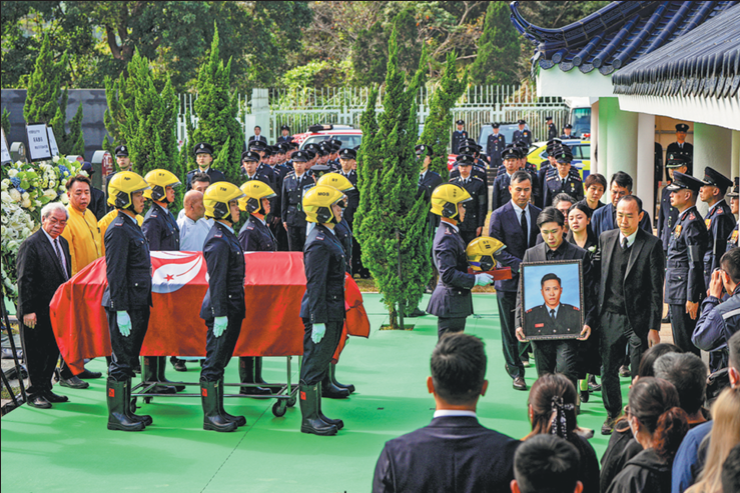Interpreting art in a different light
By ZHAO XU | China Daily | Updated: 2024-06-13 06:38

In 1729, Shi Xue, or The Science of Perspectives, a richly illustrated book and the first Chinese one to have dealt with the topic, was published. The author, Nian Xiyao, elder brother of Nian Gengyao, the right-hand man of Emperor Yongzheng before his deadly fall from grace, had studied perspective with Castiglione.
A notion central to the illusion of depth in Western painting, perspective was brought into traditional Chinese painting — the depiction of architectural landscape in particular — by missionary artists around the same time, and was quickly taken up by their Chinese counterparts, especially those working at the imperial court.
In 1689, Emperor Kangxi made a grand tour to consolidate his authority over southern China. The renowned landscapist Wang Hui (1632-1717), assisted by his team of painters, recorded the journey in a series of twelve oversize handscrolls ranging from 14 to 26 meters long.
While the format of a handscroll is decidedly Chinese, the spatial representation in each painting pointed to an acute sense of depth and perspective not typically seen in traditional Chinese paintings.
On view at the Suzhou Museum exhibition are two images of Wang Hui. One is the rubbing of an original work done by celebrated Qing-dynasty portraitist Yu Zhiding. Yu meant it as a parting gift for Wang Hui who, having spent eight whole years on his royal commission, had decided to leave Beijing for good.
In the painting, Wang Hui, wearing a loose-fitting robe and no hat, was making his way home on the back of a cow, followed by his luggage-bearing attendant. For those familiar with the iconography of Chinese portraiture, Wang Hui, once trusted by the emperor, had chosen to be seen as someone whose only ambition was to be with nature.
A few steps away from the rubbing is a portrait of him living the life he had always wanted, amid nature's untended wilderness. Visibly older than he had appeared in Yu's work, the man, slightly frail and in white, seems to be receding slowly into the background. This deeply spiritual portrait was from Wang Hui's two other painter friends, Xie Bin and Wu Li, the latter believed to have befriended many Western artists who lived in China at the time.
"It's a two-way street whereby the Chinese and Western artists came under the influences of each other," says Yang. "While some of the influences had led to conscious decisions — like the one to keep shadows off the face, others were felt more subtly, sometimes without one's knowledge."
In 1711, Italian Jesuit priest Matteo Ripa was appointed court painter by Emperor Kangxi. According to his own memoir, to get that position, Ripa was asked to prove his own worth, with painting tools drawn from both Chinese and Western traditions.
"These included a Chinese brush, some paint and an oil painting canvass," he wrote.
























